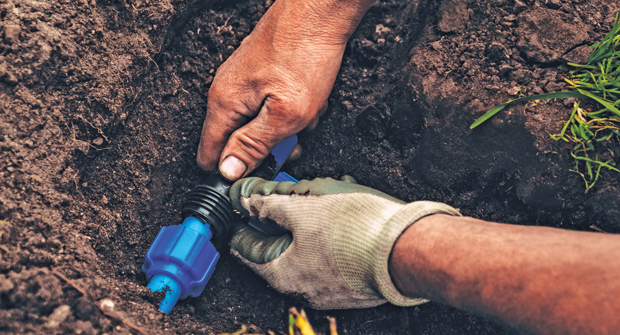By: Ron Hall
If we don’t do better with landscape irrigation we’re going to lose it, or at least as we’ve practiced it to this point.
The we in this case are homeowners and those of us who offer professional irrigation design, installation and maintenance. I use the word “professional” broadly because there are way too many poorly installed and maintained systems out there.
A confused situation
In a word, the state of landscape irrigation in most markets is not encouraging. This is probably more true in markets outside of the arid U.S. Southwest where we’re starting to get it . . . kind of. Even there, there’s vast room for improvement, I’m learning.
How confused is the landscape irrigation picture? I got yet another hint of that at the recent Lawn Care Summit, co-hosted by PLANET and the NPMA, in Atlanta.
Bobby Jenkins, owner of ABC Home & Commercial Services, said that his company will provide lawn services only to those properties that are irrigated. By contrast and speaking later at the same Summit, Patrick O’Brian, who runs the lawn care division for Jamison Pest & Lawn, said he will not provide lawn care services to homeowners who have irrigation, his point being that most irrigated lawns there are badly over-watered and prone to all kinds of problems that would frustrate the best efforts of any professional lawn service operation.
Certainly, some of the difference in the two companies’ service philosophies is due to geography. ABC’s Texas market offers different environmental conditions than Memphis, TN, headquarters for Jamison Pest & Lawn. But, I think the bigger issue is the shoddy design, maintenance and/or operation of most homeowner irrigation systems. And, this considering that irrigation is probably the most critical cultural practice for turf and landscape care on most landscaped properties.
We must raise the bar
While we in the landscape contracting business can only do so much in educating and prodding customers to upgrade, maintain and properly operate their irrigation systems, there’s a whole lot we can and should be doing to raise the bar among ourselves. We now have precision irrigation technology and tools, and there’s no lack of ready educational materials and learning opportunities, including hands-on training.
The “so-far-so-good” attitude that, to this point, has characterized landscape irrigation isn’t going to cut it any longer. The people that make the decisions of who gets water and how much will see to that.
Beyond that, treated water is going to get a lot more expensive. My community has been raising water/sewer rates 5% annually since it installed a new treatment plant several years ago. The neighboring city of Toledo, OH, is proposing 9% increases for water/sewer for each of the next four years. My guess is most of you (and your customers) are seeing similar price increases.
The stakes are huge
Saving money is probably not as big a water-conserving incentive as it will eventually become. No, the bigger, let’s make that biggest reason for becoming better water managers and being more aggressive in steering our clients in that direction is also the most obvious — so that we can stay in business and continue to deliver valuable environmental and life-enhancing services to customers in our urban and suburban markets.
Think about that. What other industry, other than the Green Industry, is in a position to make such a positive environmental impact within our communities?
Simply put, we can’t afford to lose irrigation or have it restricted to the point of shrinking our industry and its contributions to our communities, which is the direction it could very well go if too many of us continue to regard irrigation as much a landscape curse as a blessing.

